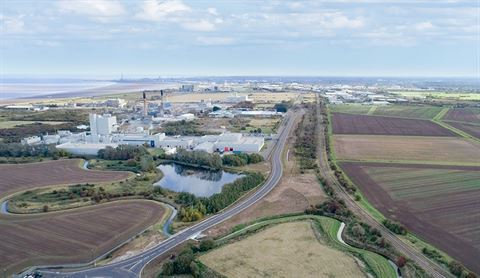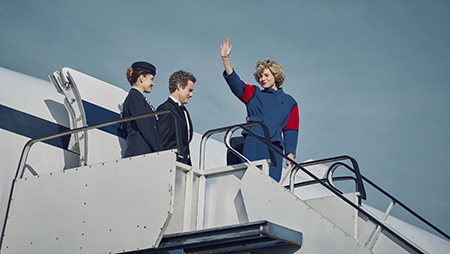FUTURE OF FLIGHT • May 2021
LanzaJet: a sustainable fuel partnership
Aviation’s future is intertwined with the need to address climate change via decarbonisation efforts and the deployment of green tech initiatives. Aero-industry journalist Paul Sillers reports on how British Airways is extending its commitment to operating on sustainable aviation fuel
From late 2022 onwards, a number of British Airways flights will be powered with Sustainable Aviation Fuel (SAF) produced by Illinois-based LanzaJet via a patented ‘Alcohol to Jet’ (AtJ) process. This works by taking non-edible agricultural residues, including wheat straw, which are then converted into ethanol and subsequently turned into airplane fuel. Clever, no?
The initiative is just another step forward along British Airways’ sustainability roadmap to achieve net zero carbon emissions by 2050, and is part of a broader commitment by British Airways’ parent company IAG to invest $400m in the development of sustainable aviation fuels.
In this latest move towards decarbonising aviation, British Airways, in collaboration with IAG’s accelerator programme Hangar 51, is investing (alongside Mitsui and Suncor Energy) in SAF technology producer LanzaJet – a spin-off of biotech company LanzaTech. Under the arrangement, SAF will be produced for the British Airways fleet in LanzaJet’s Freedom Pines Fuels facility in Georgia, slated to be constructed this year.
“Progressing the development and commercial deployment of sustainable aviation fuel is crucial to decarbonising the aviation industry and this partnership with LanzaJet shows the progress British Airways is making as we continue on our journey to net zero,” says British Airways CEO Sean Doyle.
The initiative is complementary to the joint development agreement between British Airways and sustainable fuels technology company Velocys, which plans to manufacture SAF for the British Airways fleet from household and office waste here at home in the Lincolnshire-based Altalto facility.

Go with the flow
And there’s more in the pipeline. The collaboration with LanzaJet also involves carrying out preliminary planning for a potential commercial-scale SAF biorefinery in the UK. The plan is that LanzaJet will set up four new facilities operating from 2025 that would produce a larger scale flow of SAF from sustainable feedstocks.
The aspiration is that some or all of these plants will be UK located, contingent on UK Government policy endorsement for waste-based sustainable aviation fuel – to bolster the deployment of the UK’s SAF production capacity. Sean Doyle summarises it best: “The UK has the experience and resources needed to become a global leader in the deployment of such sustainable aviation fuel production facilities, and we need Government support to drive decarbonisation and accelerate the realisation of this vision.”
The sustainable jet fuel that will be produced for British Airways by LanzaJet will cut greenhouse gas emissions by more than 70 per cent relative to regular fossil-based jet fuel
What’s the benefit of SAF?
LanzaJet’s Alcohol to Jet (AtJ) process is the result of years of research and development carried out via a partnership between LanzaTech (which launched LanzaJet in June 2020) and the US Department of Energy’s Pacific Northwest National Laboratory.
The sustainable jet fuel that will be produced for British Airways at LanzaJet’s Georgia facility will cut greenhouse gas emissions by more than 70 per cent relative to regular fossil-based jet fuel – that’s comparable to eliminating the emissions from 27,000 petrol or diesel cars annually.
Parallel to that, when the collaboration between British Airways and Velocys in Lincolnshire becomes operational, the aim is to produce enough SAF from household and office waste to fuel more than 1,000 London to New York flights annually.
Lightening the load
Another effective way of mitigating environmental impact is to reduce fuel burn by taking weight off the plane. Just over a year ago, British Airways rolled out new measures to reduce 700 tonnes of single-use plastic on board its flights, which adds up to a quarter of a billion less individual items of plastic.
The introduction this January of British Airways’ Speedbird Café menu for customers in Euro Traveller, enabling customers to purchase food, drink and duty free retail items before their flight, also helps the airline reduce on-board waste and cut on-board weight by aligning what is uploaded to the aircraft with the passengers’ inflight needs.
But there are also less conspicuous ways in which British Airways is saving weight on board. By replacing its galley trollies with lighter ones, the airline is saving 5,000 tonnes of CO2 – equal to the emissions produced from 300 London to Paris return flights. On the flight deck, the pilots’ paper manuals have been replaced with tablets, saving 2,300 tonnes of CO2. And, in the passenger cabin, new lightweight seats on short-haul aircraft save 9,100 tonnes of CO2.
On an operational level, smarter taxiing procedures, such as operating a single engine on short-haul planes while they meander between the terminal and the runway, saves 3,700 tonnes of CO2.
British Airways’ collaboration with ZeroAviva to investigate hydrogen-powered flight could transform aviation in the 2030s, developing aircraft that produce no CO2 at all
The long and the short of it
As these immediate term weight savings and their associated reductions on climate impact take effect, and as SAF comes on stream, there’s also a focus on the longer term. British Airways is already looking towards the coming decades and supporting initiatives where completely new energy paradigms come into play.
For example, British Airways has collaborated with ZeroAvia, which is investigating the potential of hydrogen-powered flight as a viable commercial proposition. If proved to be feasible at scale, this could transform aviation in the 2030s with the advent of aircraft that operate without producing any CO2 at all.
The big news is that ZeroAvia made a quantum leap in September 2020 by successfully undertaking the world’s first hydrogen-fuel-cell-powered test flight of a small passenger airplane.
For the present, of course, it’s essential for aviation to strike a balance between navigating safely out of the pandemic while championing a sustainable path towards a brighter tomorrow. In a final word from CEO Sean Doyle, “Despite the crisis in global aviation, it is vital for our future that we continue to address climate change and we remain focused on playing our part to reduce the impact we have on the planet.”
This article has been tagged BA, Technology
More from previous issues

How to get your garden summer ready
Warmer days are on their way, so treat your outdoor space – and its visitors – to some TLC courtesy of the Avios eStore

The Cloud Bank
It’s amazing what you can see at 35,000 feet. British Airways customers share their best photographs captured from the cabin

Plane spotting: British Airways in the movies
The flag carrier airline has enjoyed starring roles in everything from James Bond and John Cleese blockbusters to TV’s The Crown

The best of BA news
New routes, new alliances, food to go and steaming cups of hand-roasted coffee
